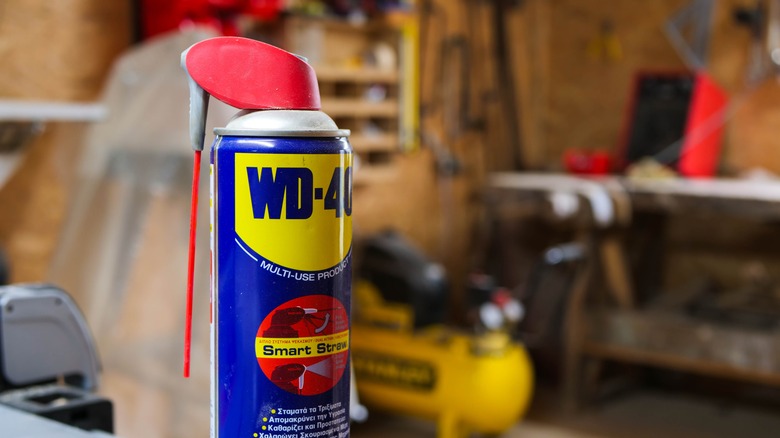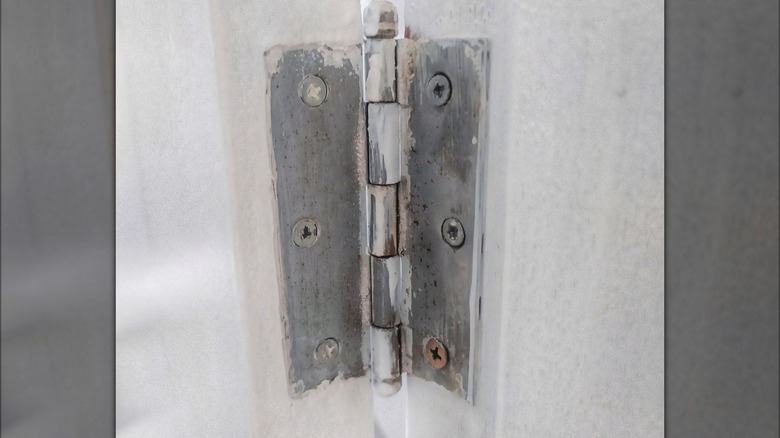WD-40: Can You Make Your Own In A Pinch, And Is It Safe To Use?
In the midst of a household crisis, WD-40 often emerges as the unsung savior. The name WD-40 has become almost synonymous with lubrication and prevention of rust. From fixing squeaky hinges to loosening bolts, removing adhesives, or preventing metal surfaces from getting corroded, it is a must-have for many. However, what happens when the need arises, and the iconic blue and yellow can is nowhere to be found? One might wonder if WD-40 can actually be made at home and whether or not such homemade substitutes are safe for use? Its ubiquity naturally leads to exploring the potential of crafting a homemade version in times of need.
The secret behind WD-40's formulation has always been a source of speculation because it is closely guarded. The mystery surrounding the specific combination of lubricants, solvents, and propellants used in its production forces us to ask: Can we recreate its magic using ordinary household products? Let's navigate the fascinating landscape as we navigate the concoction of WD-40 and the search for a homemade version.
How to make WD-40
When it comes to freeing seized metallic parts, engineering students at Drexel University in Philadelphia, Pennsylvania, discovered that a mixture of vegetable oil and 10% acetone works just as well, if not better than WD40. These items are readily available in most homes, and the idea is simple. If it is squeaky hinges you want to be rid of, a cooking spray will work perfectly in this regard. Just spray directly onto the hinge and be ready to rid yourself of those annoying noises! If you have sticky messes that you want to clean up, like those left behind from stickers or labels then a simple mixture of vegetable oil and bicarbonate of soda will work wonders. Rub it into the affected area and wipe away with a paper towel.
It's essential to acknowledge that while these DIY concoctions may provide basic lubrication and penetrating properties, they may not always match the precision and effectiveness of the commercial product. WD-40 undergoes rigorous testing to ensure optimal performance across diverse applications, a level of refinement challenging to achieve in a homemade version.
Experimentation is key when using the DIY WD-40 substitute. Test it on small, inconspicuous areas first to gauge its effectiveness and compatibility. Keep in mind that for critical applications or intricate machinery, relying on the commercial WD-40 remains the recommended choice.
Is homemade WD-40 safe?
While concocting a DIY WD-40 alternative is feasible, safety is paramount. As mentioned before, commercial WD-40 is tested to ensure safety. The proprietary nature of its formulation allows for a precise balance between lubrication, penetration, and safety.
On the other hand, homemade mixtures lack the precision of commercial products. Household ingredients' specific properties and interactions may vary, leading to unpredictable results. Moreover, the flammability of some DIY components, such as acetone, poses more potential safety risks. WD-40 itself is flammable and must be used with extreme caution, and the same applies to homemade versions with flammable ingredients added. The controlled environment in which commercial WD-40 is manufactured ensures that it meets stringent safety standards, which may not be guaranteed in a homemade version.
While creating a DIY WD-40 may seem like a practical solution, it's essential to prioritize safety. Commercial WD-40's proven track record and adherence to safety standards make it a more reliable choice for critical applications, ensuring both efficacy and user well-being.


